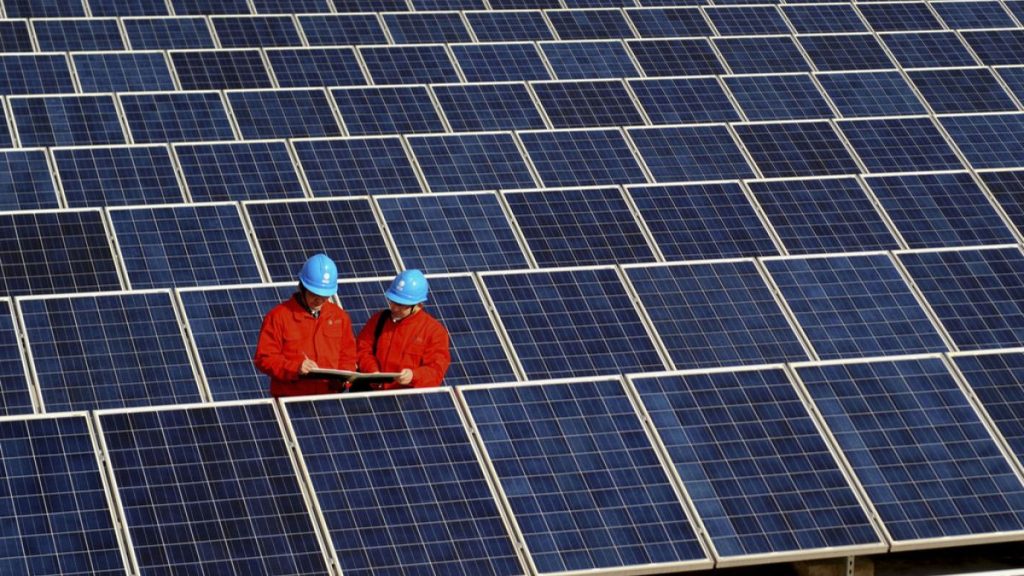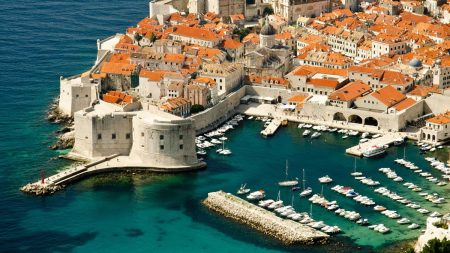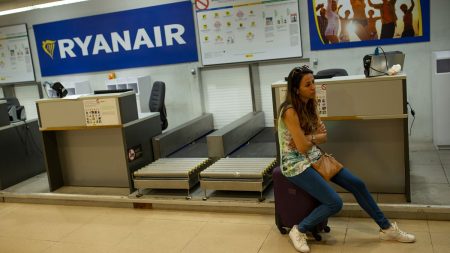Rome’s Fiumicino Airport, officially known as Leonardo da Vinci International Airport, has embarked on an ambitious project to significantly reduce its carbon footprint and achieve net-zero emissions by 2030, a goal far more ambitious than those set by most other airports. The centerpiece of this initiative is the construction of a massive solar farm, the largest of its kind in Europe, spanning 2.5 kilometers and boasting 55,000 solar panels. This impressive array, strategically positioned alongside runway three, transforms previously unused land into a powerful engine of renewable energy generation. Visible to arriving passengers, the solar farm serves as a tangible symbol of the airport’s commitment to sustainability.
The environmental benefits of the solar farm are substantial. The facility is projected to reduce the airport’s CO2 emissions by over 11,000 tons annually, an amount equivalent to the energy consumption of approximately 1,477 homes for an entire year. This substantial reduction represents a significant step towards mitigating the environmental impact of air travel. Beyond the immediate emissions reductions, the solar farm contributes to a broader shift towards renewable energy sources, lessening the airport’s dependence on fossil fuels and fostering a more sustainable energy landscape.
The solar farm represents just the initial phase of a comprehensive five-year plan to expand solar energy generation at Fiumicino Airport. The airport aims to install additional solar panels throughout its grounds, with the ultimate objective of producing enough clean energy to power an estimated 30,000 Italian homes. This ambitious expansion underscores the airport’s dedication to becoming a leader in sustainable aviation and demonstrating the feasibility of large-scale renewable energy integration within the aviation sector.
The Italian government actively supports and encourages this type of innovative land use for renewable energy projects. Minister of Environment and Energy Security, Gilberto Pichetto Fratin, lauded the project as a prime example of achieving decarbonization through modernization and innovation rather than through sacrifice. A ministerial decree promotes the utilization of underutilized land, such as abandoned quarries or areas alongside highways and railway lines, for renewable energy projects. This policy aims to maximize the potential of Italy’s land resources for sustainable development and contribute to the national transition towards a greener economy.
Airports are inherently energy-intensive operations, requiring substantial power for lighting, heating, cooling, baggage handling systems, and various other functions. This high energy demand historically translates into significant carbon emissions, making airports a key target for emissions reduction efforts. Fiumicino Airport’s commitment to utilizing its available land for renewable energy generation serves as a model for other airports seeking to reduce their environmental impact and contribute to the global green transition.
Marco Troncone, CEO of Aeroporti di Roma, the company managing Rome’s airports, highlighted the multifaceted approach to achieving net-zero emissions. The integration of renewable energy sources, particularly photovoltaic systems, coupled with the adoption of electric vehicles for airport operations, forms the core of the airport’s green transition strategy. The solar farm is a pivotal component of this broader strategy, paving the way for a more sustainable future for the airport and the aviation industry as a whole. The project has also earned praise from Italian environmental NGO Legambiente, which sees the initiative as a potential model for promoting the green economy globally. The combined efforts of Fiumicino Airport and the Italian government demonstrate a strong commitment to sustainable development and offer a hopeful vision for a greener future in the aviation sector.














